8.6 /10 1 Votes8.6
77% Metacritic | 9/10 Steam 9.3/10 IGN Producer(s) Jean-François Poirier Initial release date 29 April 2014 | |||||||||||||||||||||||||||||||||
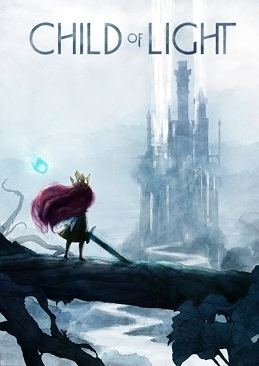 | ||||||||||||||||||||||||||||||||||
Director(s) Patrick PlourdeThomas Rollus Designer(s) Mélissa CazzaroAurélie Débant Release date(s) April–July 2014Microsoft Windows:NA: April 30, 2014EU: April 30, 2014AU: May 1, 2014JP: May 1, 2014PlayStation 3 & PlayStation 4:NA: April 29, 2014EU: April 30, 2014JP: May 1, 2014AU: May 1, 2014PlayStation Vita:AU: May 1, 2014NA: July 1, 2014 (PSN)EU: July 2, 2014JP: July 31, 2014NA: March 24, 2015 (retail)Wii U:NA: April 29, 2014JP: April 30, 2014PAL: May 1, 2014Xbox 360:WW: April 30, 2014Xbox One:NA: April 30, 2014PAL: April 30, 2014JP: September 4, 2014 Genres Platform game, Role-playing video game Platforms PlayStation 4, Xbox One, PlayStation 3, PlayStation Vita, Xbox 360, Wii U, PlayStation Portable, Microsoft Windows Similar Ubisoft games, Platform games | ||||||||||||||||||||||||||||||||||
Most beautiful game ever child of light
Child of Light is a platforming role-playing video game developed by Ubisoft Montreal and published by Ubisoft for Microsoft Windows, the PlayStation 3, PlayStation 4, Wii U, Xbox 360 and Xbox One in April 2014, and was released on PlayStation Vita in July 2014. It is powered by UbiArt Framework.
Contents
- Most beautiful game ever child of light
- Child of light review
- Gameplay
- Plot
- Development
- Reception
- Related media
- References
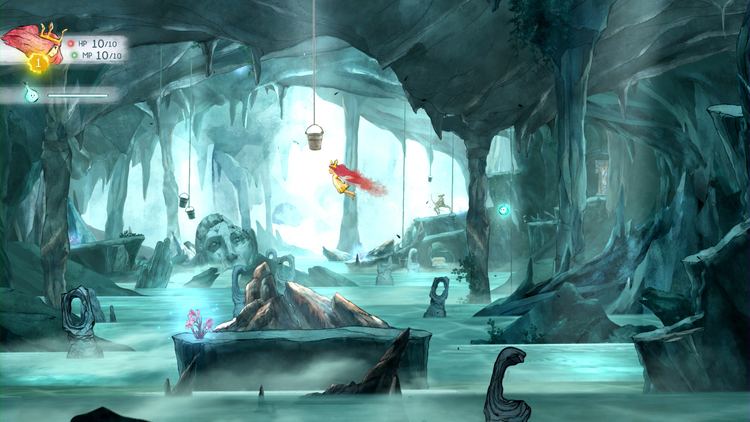
Child of Light takes place in the mythical land Lemuria. Aurora, a child who wakes up in Lemuria after freezing to death, must bring back the sun, the moon and the stars held captive by the Queen of the Night in order to return.
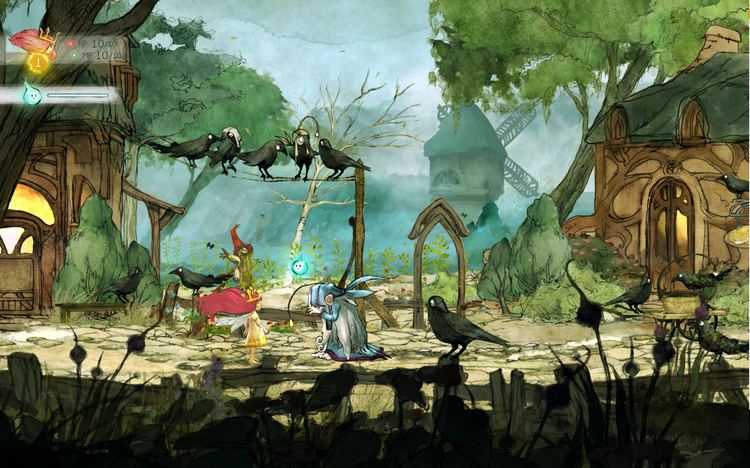
Child of light review
Gameplay
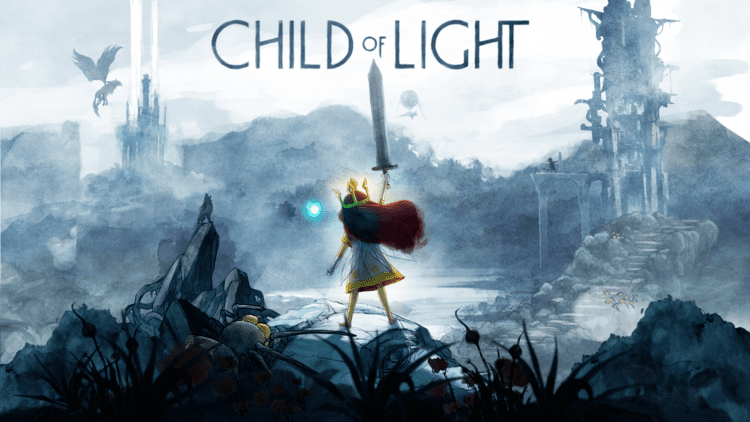
Child of Light's gameplay is described as having attributes of a side-scroller with role-playing elements such as leveling up to increase stats over time. Battles with enemies use a system similar to the active-time battle system found in games like the Final Fantasy series and the Grandia series. The player can control up to two characters during battle, while the other characters don't level up the same way. Up to three enemies can appear during battle. If the player approaches an enemy from behind the battle becomes a "Surprise Strike", giving the player an advantage. If the enemy approaches the player from behind, it becomes an "Ambush", giving the enemy an advantage. The character Igniculus is used as an in-game mechanic during battle. The player can freely move Igniculus and shine his light on an enemy to slow it down or on an ally to heal them.
Plot
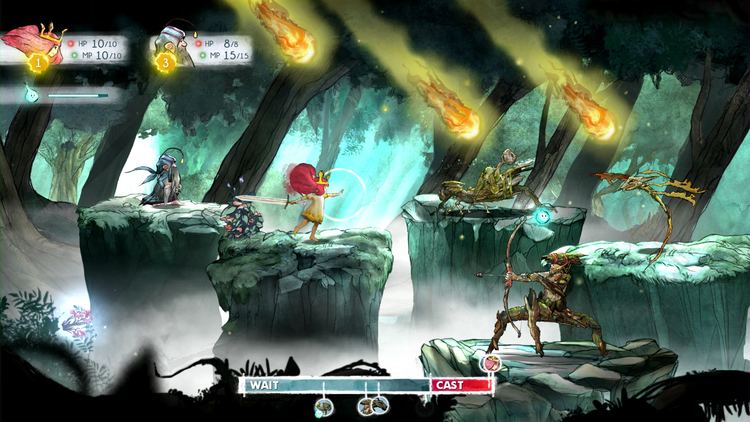
The game begins in 1895 Austria, with a Duke and his daughter Aurora. On Easter Eve, Aurora falls mysteriously ill, and seemingly dies in her sleep. As a result the Duke becomes bedridden, overcome with despair.
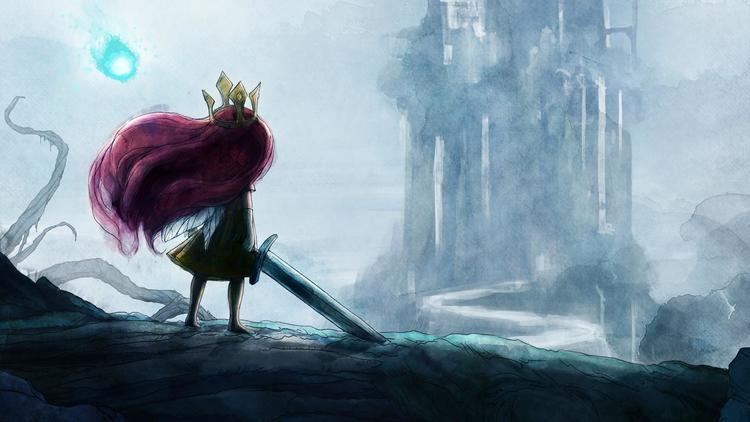
The player first takes control of Aurora when she awakens on an altar in the land of Lemuria. She meets and befriends a firefly named Igniculus, who leads her to a chamber where the Lady of the Forest is imprisoned. Upon freeing the Lady, Aurora is told of the history of Lemuria. Lemuria was once ruled by the Queen of Light until one night when she mysteriously vanished. In the darkness, rose the Dark Queen Umbra who sent her daughters to steal Lemuria's light — the sun, the stars, and the moon. In return for a way home, Aurora agrees to recover Lemuria's light. The Lady also reveals to Aurora that the two worlds are connected by a mirror. The Lady gives Aurora the stars which she had, it grants Aurora the ability to fly.
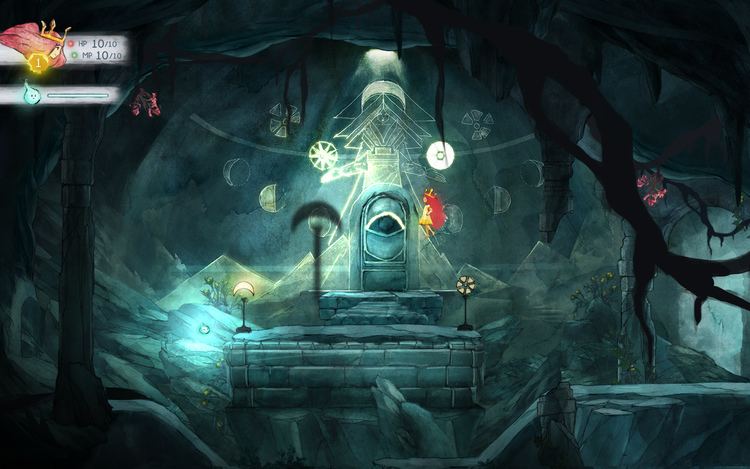
Along Aurora's quest, she is joined by Rubella, an Aerostati jester who is searching for her brother Tristis; Finn, a young Capilli whose village is beset by a curse; Norah, Aurora's stepsister, who was pulled through the mirror to Lemuria; Robert, a Populi trader; and Rubella's brother Tristis.
The party eventually locates the mirror back to Aurora's world. Upon crossing, Aurora is immediately confronted by her stepmother and the other stepsister Cordelia. Norah reveals that she led Aurora into a trap and that her mother and Aurora's stepmother is in fact Umbra, the Queen of the Night. This means Norah and Cordelia are Nox and Crepusculum, the daughters Umbra sent to steal Lemuria's sun and moon. Aurora further learns that Umbra's arch-enemy, the Queen of Light, is in fact Aurora's mother. Umbra tries to kill Aurora, but Aurora's false crown—a gift from her father—shields her from death. Aurora is thrown in prison and left to die.
Upon awakening, Aurora is joined by Óengus, a Kategida prison guard who pledged to fight the darkness. Leaving the tower, they are confronted by Crepusculum, the stepsister who has the moon. After defeating her and acquiring the moon, Aurora and her friends head to the Cynbel Sea seeking the sun. Crossing the Cynbel Sea, Aurora is joined by Genovefa, a sorcerer of the Piscean Village.
After making her way through the Sun Palace, Aurora encounters and defeats Nox, who has the sun. Umbra promptly arrives, angry at the death of her daughters, but she offers Aurora the chance to reunite with her father in exchange for the moon and the stars. Unable to abandon Lemurians to their fate, Aurora refuses leading to Umbra killing her father. With the Duke's death, the fake crown protecting Aurora disappears, leaving her vulnerable to Umbra’s magic. Severely injured from the attacks, Aurora crawls her way to escapes with the sun.
Igniculus, with the help of his firefly friends, carries Aurora to the altar where she first woke in Lemuria. Beside the altar is the Lady of the Forest, who reveals herself to be the Queen of Light—Aurora's mother. She restores Aurora with the help of all the Lemurians Aurora helped in her journey. With Aurora’s renewed powers, she quickly flies the crew up into the sky to Umbra’s castle and defeat Umbra.
Through the fountain water, the vision shows a servant saying that the Duke is dead and the water is rising. With the help of all her Lemurian friends, Aurora rescues the people of her world from the flood by leading them to Lemuria.
Development
Initially revealed at GDC Europe 2013 by Patrick Plourde, Child of Light is said to be inspired by Studio Ghibli and Yoshitaka Amano in its art style, and in presentation similar to games like Vagrant Story, Final Fantasy VIII and Limbo. During development, the lead programmer was Brie Code.
The original soundtrack has 18 tracks and was composed by Béatrice Martin, better known as Cœur de pirate, a Canadian singer and songwriter from the province of Québec.
Reception
Child of Light received positive reviews from critics. Aggregating review websites GameRankings and Metacritic gave the PlayStation 3 version 90% and 89/100, the Wii U version 84.62% and 84/100, the PlayStation 4 version 83.48% and 82/100, the Xbox One version 82% and 82/100, the Xbox 360 version 80% and 74/100, and the PC version 76.29% and 74/100.
Vince Ingenito of IGN gave it a 9.3/10, praising the combat system and visual style, although he also said that the rhyming felt forced. Chris Carter of Destructoid gave it an 8.5/10, calling the combat system "straightforward, yet fun" and praised the story. GameZone's Matt Liebl gave the PC version a 9.5/10, stating "Child of Light isn’t the type of game we’re used to from Ubisoft, but it’s the type of game this industry needs. It’s hard not to look at the game and admire its beauty, but underneath the gorgeous visuals is a thought-provoking story that’ll draw you in."
Related media
On April 30, 2015, Ubisoft released a digital book titled Child of Light: Reginald the Great to celebrate the game's first anniversary. Written by the game's writer Jeffrey Yohalem, the story of the book revolves around Reginald the Great and his journey in a place called Lemuria.
